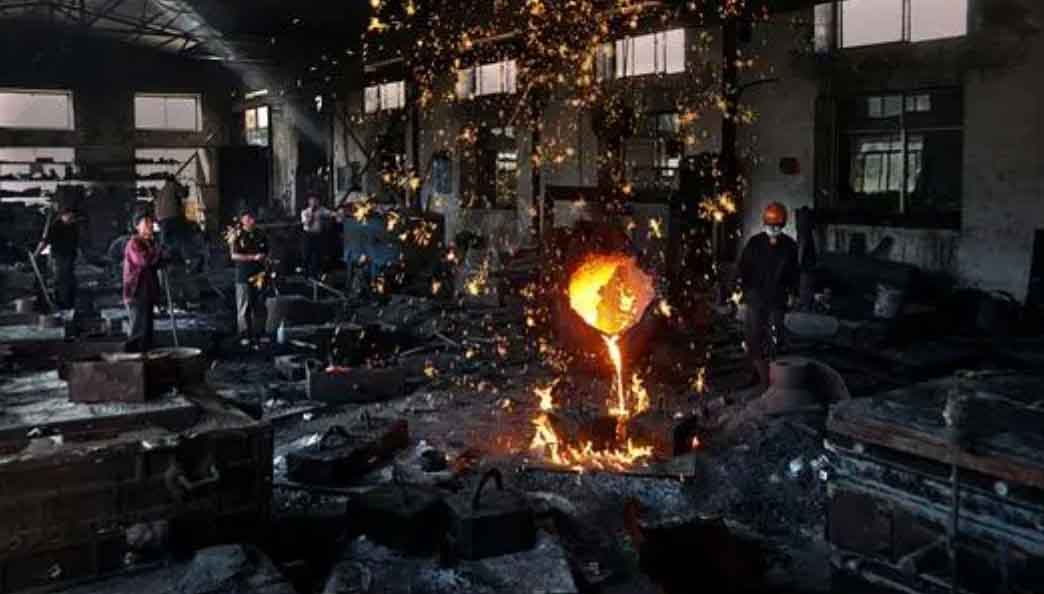The steel casting industry serves as a fundamental pillar of China’s equipment manufacturing sector. As the world’s largest producer for 10 consecutive years, China’s annual output reached 47.2 million tons in 2016, with steel castings accounting for 10-13% of this total. The geographical distribution of production capacity shows significant regional disparities:
| Region | Annual Output (million tons) | National Share (%) |
|---|---|---|
| East China | 1.886 | 36.98 |
| Central China | 1.439 | 28.21 |
| Northeast China | 0.667 | 13.07 |
| Southwest China | 0.410 | 8.03 |
| South China | 0.357 | 6.99 |
| North China | 0.197 | 3.86 |
| Northwest China | 0.145 | 2.85 |

China steel casting capabilities have achieved remarkable milestones, including single-cast components weighing up to 520 tons and large-scale production of critical components for nuclear power plants, hydroelectric turbines, and high-speed rail systems. The performance enhancement through alloying follows the relationship:
$$ \Delta P = k \cdot \sum_{i=1}^{n} C_i \alpha_i $$
Where \(\Delta P\) represents performance improvement, \(C_i\) is concentration of alloying element, and \(\alpha_i\) denotes its strengthening coefficient. For example, adding 0.4-0.5% Mo and 0.04-0.06% Nb to low-alloy steel increases tensile strength from 630MPa to 766MPa:
$$ \sigma_b = \sigma_0 + \beta_{Mo} \cdot C_{Mo} + \beta_{Nb} \cdot C_{Nb} $$
Microalloying with rare earth (RE) elements significantly enhances mechanical properties. RE treatment of 20MnCrNi2Mo steel improves impact toughness at -40°C by 36.87%:
$$ \Delta K = K_{RE} – K_0 = \gamma \cdot C_{RE}^{0.5} $$
Where \(\gamma\) represents the refinement coefficient (typically 15-25 for China steel casting applications). The thermal efficiency of heat treatment processes follows:
$$ \eta_t = \frac{T_{opt} \cdot t_{opt}}{T_a \cdot t_a} \times 100\% $$
Optimal austempering at 900°C for 120 minutes followed by 320°C isothermal treatment generates bainitic-austenitic duplex structures, increasing excavator bucket tooth service life by 80% compared to traditional materials.
Despite progress, China steel casting faces significant challenges. Energy consumption per ton of casting (800-1000 kg standard coal) exceeds global benchmarks by 25-40%:
$$ E_c = 1.25 \cdot E_g $$
Where \(E_c\) and \(E_g\) represent energy consumption in China and globally. The yield ratio remains suboptimal at 55% versus 70% in advanced economies:
$$ Y_r = \frac{W_f}{W_m} \times 100\% $$
Where \(W_f\) is finished product weight and \(W_m\) is molten metal weight. Environmental metrics show substantial improvement potential:
| Pollutant | Emission per ton (China) | Global Benchmark |
|---|---|---|
| Slag | 300 kg | <30 kg |
| Dust | 50 kg | <5 kg |
| Waste Sand | 1.3-1.5 tons | <0.15 tons |
The future development of China steel casting focuses on four strategic pillars:
- Near-Net Shape Casting: Implementing 3D printing and precision technologies to achieve dimensional accuracy improvement:
$$ \Delta \delta = \delta_c – \delta_t \leq 0.5 \cdot IT_{grade} $$
- Purification Technology: Advanced refining processes to reduce impurity levels:
$$ [S] \leq 0.005\%, \quad [H] \leq 2\text{ppm}, \quad [O] \leq 40\text{ppm} $$
- Green Manufacturing: Targeting 30% reduction in energy intensity by 2025:
$$ E_{2025} = 0.7 \cdot E_{2020} $$
- Digital Transformation: Comprehensive adoption of simulation-driven production:
$$ \frac{t_d}{t_a} = f(S_i) \approx 0.3 \quad \text{for } S_i > 0.85 $$
Where \(t_d\) is development time, \(t_a\) is actual production time, and \(S_i\) is simulation accuracy index.
China steel casting capacity continues to evolve toward high-value segments. The proportion of premium steel castings is projected to increase from 25% to 40% by 2025, supported by RMB 70 billion annual output value. Material innovation remains central to this transition, with new alloy systems exhibiting performance metrics:
$$ \sigma_b \geq 1600\text{MPa}, \quad \delta \geq 10\%, \quad K_{IC} \geq 100\text{MPa·m}^{1/2} $$
The strategic integration of computational metallurgy, smart manufacturing, and sustainable practices will position China steel casting for global leadership in premium casting markets. Continuous advancement in these domains will transform China from the world’s largest casting producer into a quality-focused manufacturing leader.
